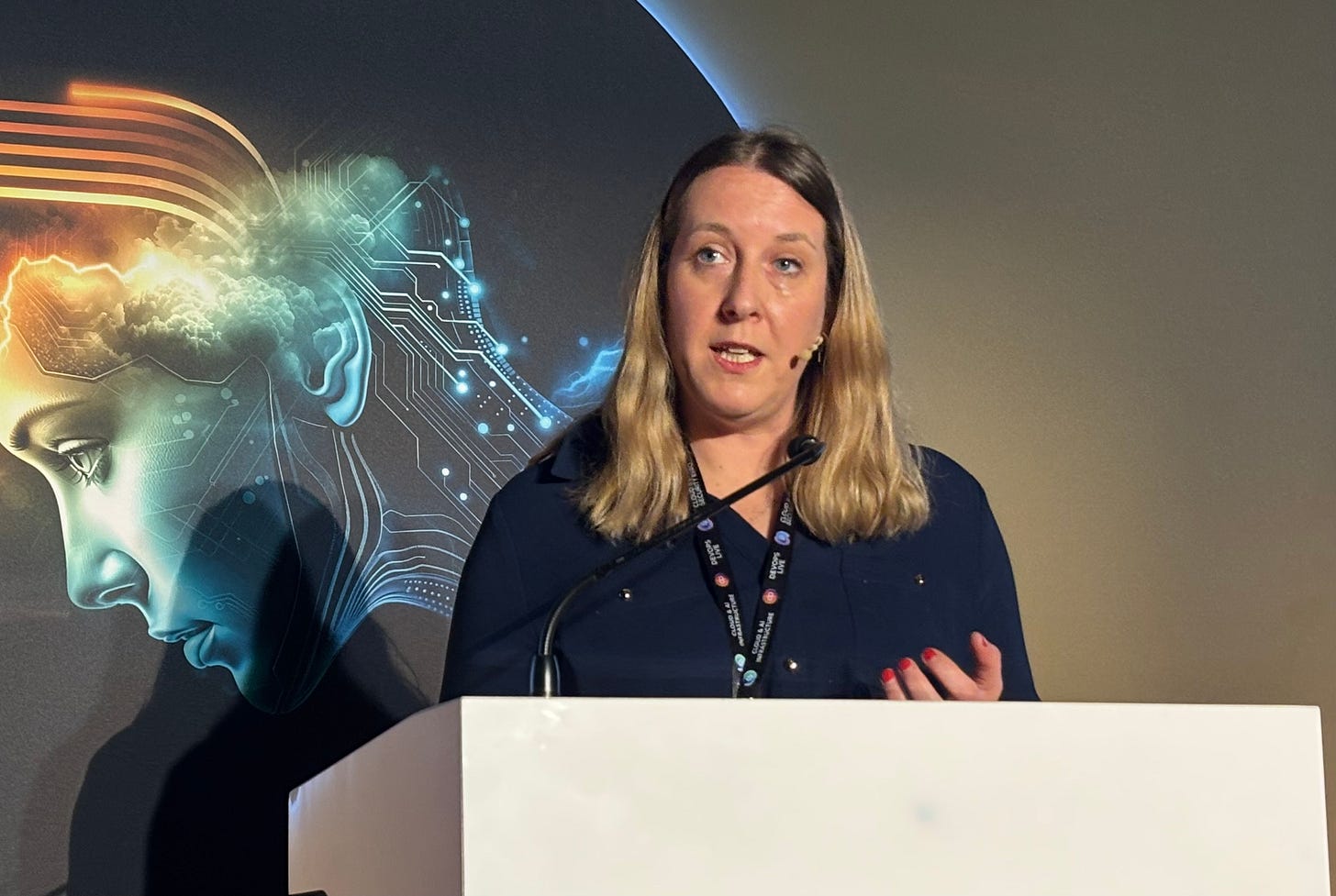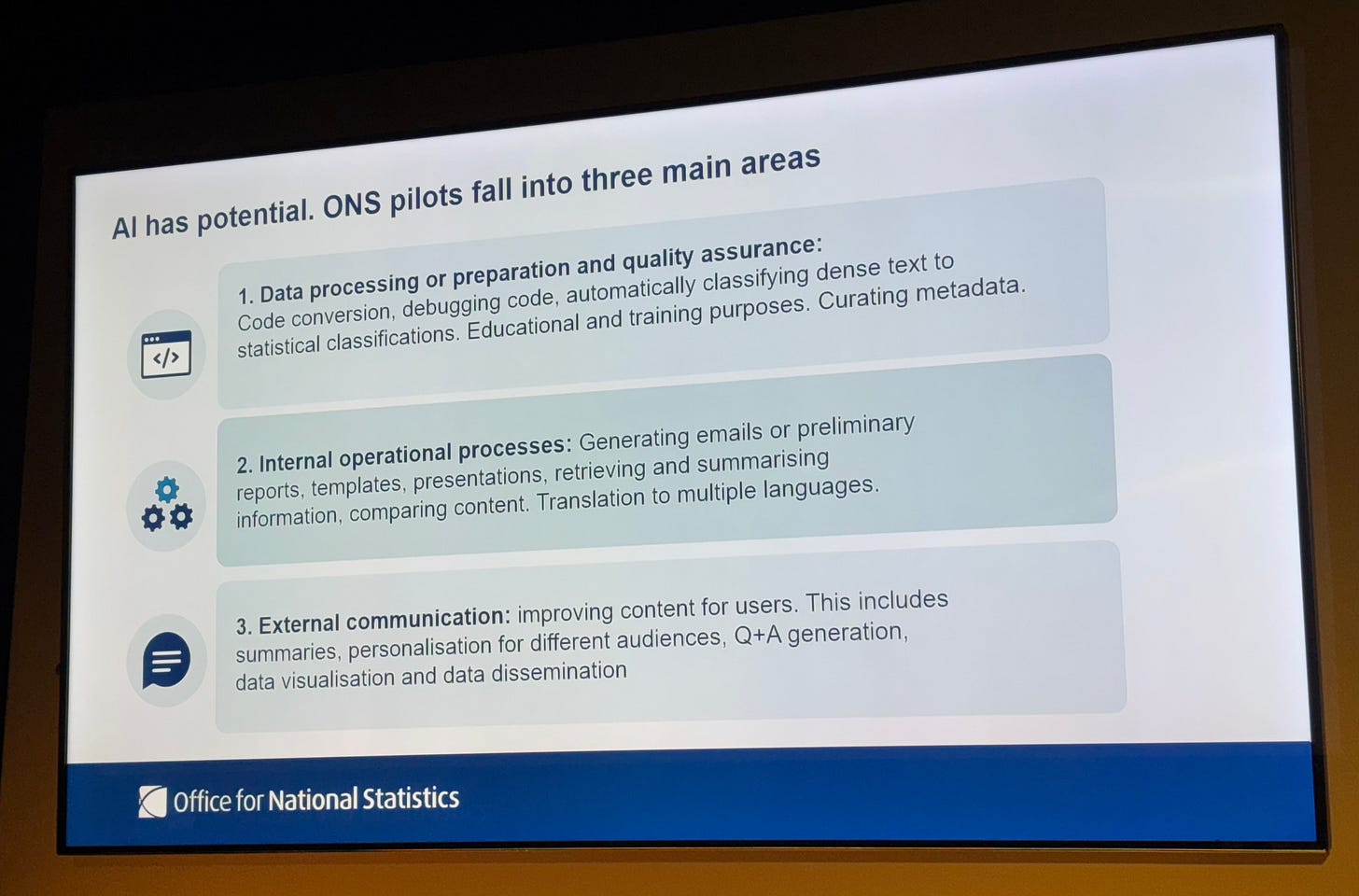Office for National Statistics Embraces Gemini AI to Lead in Ethical and Effective Data Use
ONS Turns to Gemini AI to Enhance Data Accuracy and Trust While Tackling National Statistical Challenges

In a bold move toward advancing artificial intelligence capabilities within the UK public sector, the Office for National Statistics (ONS) has adopted Google’s Gemini as its large language model of choice for AI development.
The decision, grounded in strategic alignment and infrastructure, signals the ONS’s commitment to leveraging generative AI to boost productivity, data accuracy, and public trust in national statistics.
Fiona James, ONS's Chief Data Officer and Director for Data Growth and Operations, explained the rationale behind the decision during her keynote address at the Tech Show London on March 13, 2025, at the Excel Centre.
Speaking on the topic "The Future of Statistics and AI: Keeping the Human in the Loop," James said, “In that particular case, we are building out our future data usage into Google Cloud Platform. I’d say, as our kind of strategic approach for that particular use case we chose, Gemini was the right thing to experiment and see how it went.”
“We’re finding that we’re using different tools depending on our need,” She said.
According to James, this move underscores a broader trend within the UK Government, which aims to position the country “as an AI maker rather than an AI taker.” The government’s AI Opportunities Action Plan outlines a three-pronged focus on economic growth, improved public services, and increased personal opportunities.
ONS’s use of AI supports this vision, with James emphasizing the importance of building capacity to model AI’s impact on labor markets, public sector productivity, and national safety.
Tackling Trust, Quality, and Scale
Despite these ambitious plans, the ONS faces challenges requiring thoughtful solutions and sustained effort. Chief among them is maintaining trust and quality in its data, particularly given that the proliferation of AI-generated content can sometimes distort information through biases or hallucinations, instances where AI generates factually incorrect outputs.
“Explainability and interpretability are exchanged. Explainability is very much about why AI models make their decisions, whereas interpretability is how the model makes the decision,” James noted.
The core of ONS's approach is the balance between leveraging advanced deep learning models—often less interpretable but highly accurate—and more transparent machine learning models.
In addition, the sheer volume and variety of data ONS handles pose a structural challenge. From administrative records to survey data, ensuring data quality and interoperability is monumental.
“We are working to categorize the content and meaning of datasets in a common way,” James explained, pointing to developing a standard data model as a cornerstone effort.
This model, she says, will help analysts “easily identify novel uses of our diverse data.”
A significant barrier to efficiency has been the manual processing of data. In 2024, ONS manually processed 60,000 shopping receipts for its Living Cost and Food Survey. With the introduction of Scanner AI—a pilot that classifies items on receipts—the ONS has already begun automating this task, freeing staff to focus on more complex analysis, like tracking the application of discounts across retailers.
Human-Machine Collaboration
Held at the Excel Centre in London, Tech Show London 2025 provided a platform for James to share insights into ONS's nuanced AI deployment. A key takeaway from her session was the organization’s deliberate choice to integrate AI into its existing data strategy rather than rush into a separate AI-specific framework.
“We’re first seeking to test the AI to review the problems, develop our knowledge, and empower colleagues to learn,” she affirmed.
The human element remains central to this strategy. While AI tools like GitHub Copilot, Microsoft Copilot, and Google Gemini assist with tasks from code debugging to metadata curation, decisions about deployment and ethical use are firmly in human hands.
ONS has developed policies to guide AI use, including a general AI policy and an enhanced security policy. These are reinforced by ongoing consultation with academic institutions such as the Alan Turing Institute. Ethical concerns, especially regarding workforce impacts, are taken seriously.
“AI is expected to create new jobs while also displacing existing ones. And the future workforce will need to adapt,” James said, underscoring the need for upskilling and reskilling.
Improving data quality at the entry point is one path to mitigating risks and increasing AI’s value.
In response to a question about this, James acknowledged the complexity of ONS’s data ecosystem: “We just deal with so much data. We don’t yet have one single pipeline into the organization.”
However, she emphasized ongoing efforts to validate and profile data upon entry and standardize critical pipelines for better performance and consistency.
A prominent example of AI’s promise at ONS is the “ClassifAI” tool, which was developed to classify free-text survey responses accurately. Using Gemini Pro, ONS observed a 5% increase in match accuracy compared to traditional machine learning algorithms, especially at finer classification levels.
“This suggests that with the generative AI for this context, it was much better able to adapt to the specific input data,” James explained.
The project drew significant interest from international statistical bodies, marking ONS as a leader in AI-enabled classification and demonstrating the potential of hybrid models that combine the strengths of traditional and generative AI approaches.
Staying Relevant in a Rapidly Evolving AI Landscape
ONS’s efforts extend beyond internal efficiency to how the public consumes official statistics. A pilot project using a customized ChatGPT model sought to improve search and retrieval on ONS’s website by offering semantic search capabilities.
However, concerns about prompt injection and hallucinations led ONS to pause deployment for now.
“We can’t risk presenting information and statistics in a way that is potentially irrelevant, offensive, or politically sensitive,” James explained.
This underscores a broader concern about how official statistics remain authoritative in an age of large language models.
“We do need to stay focused on services that large language models cannot do by themselves,” James urged, citing the need for high-quality, timely, and accurate data that only human-led, well-regulated organizations like ONS can guarantee.
“Large language models are a key enabler, and we’re very mindful of the current state of the market, but we need to fix the data foundations first before we move things…into production,” she concluded.
As ONS continues to evolve its use of AI, its path offers valuable lessons for public-sector organizations worldwide seeking to blend innovation with integrity and automation with accountability.
The Office for National Statistics (ONS) is the UK’s largest independent producer of official statistics. It collects and publishes data on the economy, population, and society at national, regional, and local levels. It also conducts the census in England and Wales every ten years.




